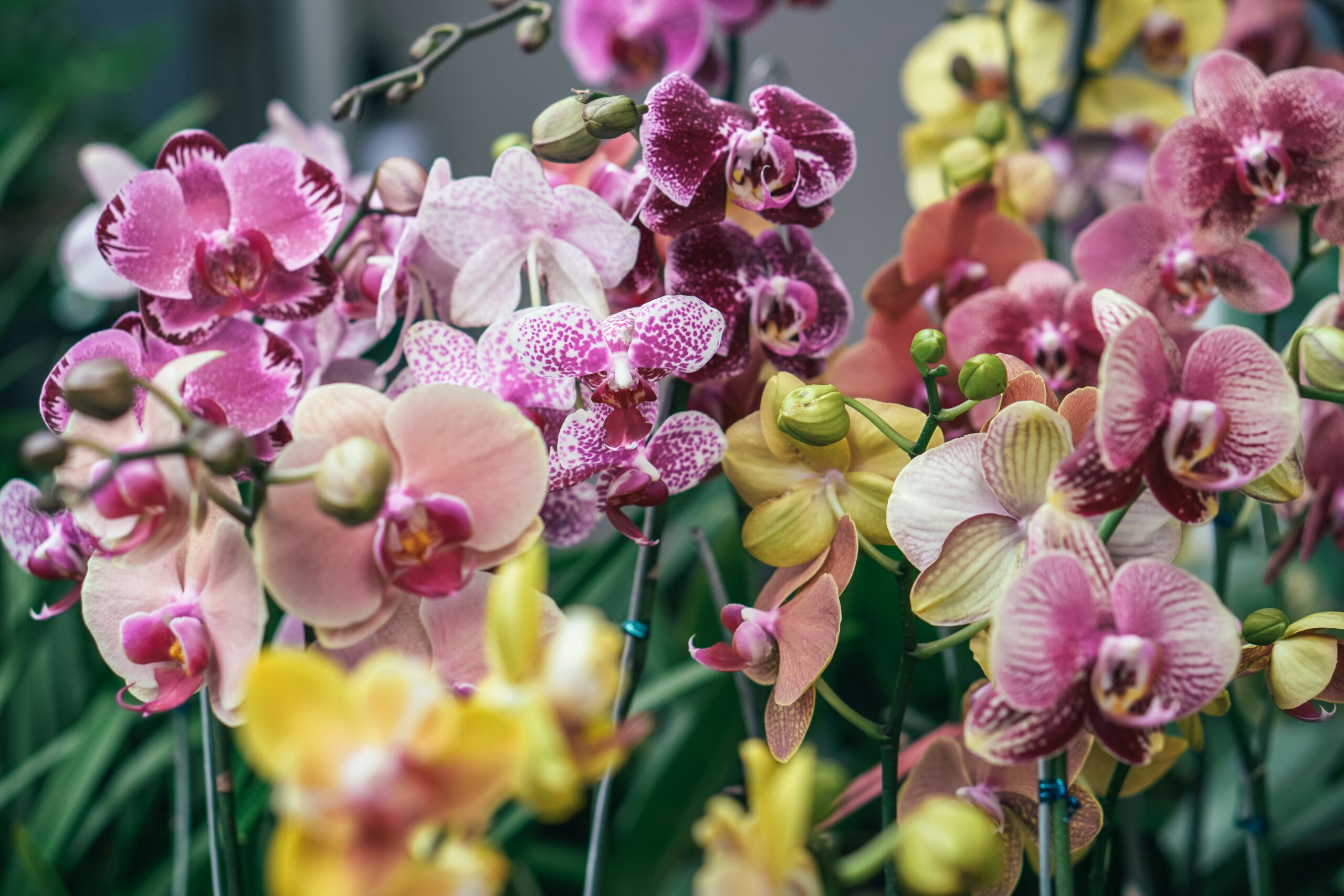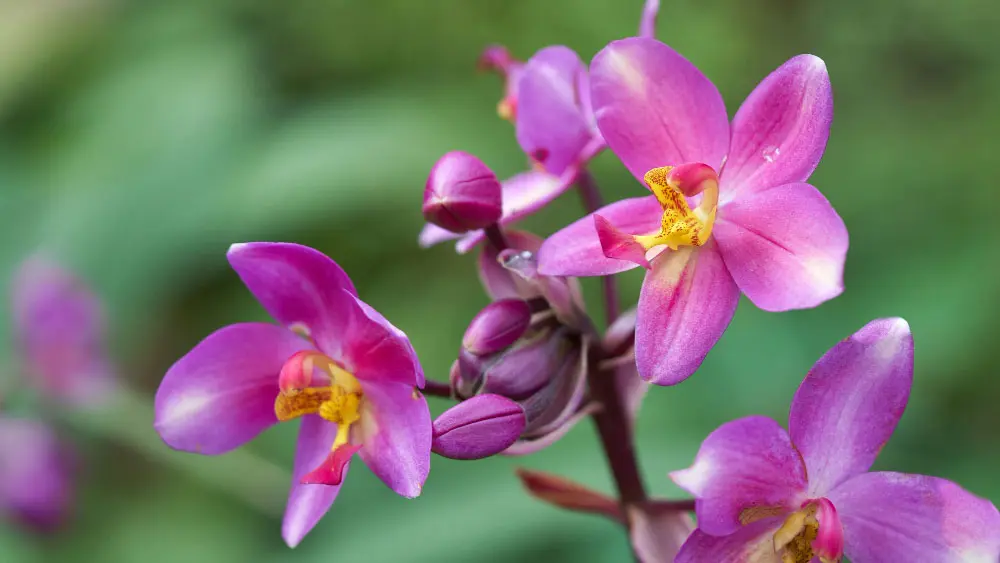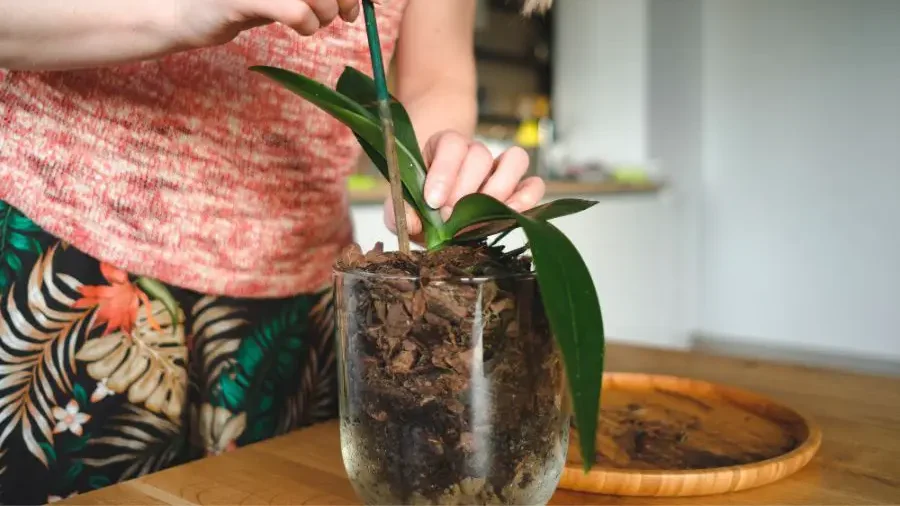Are Orchids Hard To Take Care Of? – All You Need To Know
Understanding Orchids
How to Care for Orchids
Conclusion

Orchids are often seen as delicate and challenging to care for, but with the right knowledge and attention, they can thrive as indoor plants.
In this article, we will explore the basic requirements for orchid care, including lighting, watering, and fertilizing, to help you determine if orchids are the right choice for you.
Whether you’re a beginner or experienced in plant care, this guide will provide all the information you need to keep your orchids healthy and beautiful.
Understanding Orchids
Types of Orchids
Orchids can be finicky, but with the right care and conditions, they are not difficult to maintain.
Orchids come in various types and each type has its own specific care requirements, but generally, they need proper lighting, watering, humidity, and fertilizer. You must know the orchid fertilizer.
It is important to research the specific type of orchid you have and to follow the recommended care instructions.
There are many types of orchids, including:
- Phalaenopsis (Moth Orchid) – is one of the most popular and easy-to-care-for orchids.
- Dendrobium – a large genus of orchids with a variety of growing habits and care requirements.
- Cattleya – known for their large, showy flowers and are often used in corsages.
- Paphiopedilum (Lady’s Slipper Orchid) – unique flowers with a slipper-like pouch and delicate leaves.
- Cymbidium – large, showy spikes of flowers that come in a range of colors.
- Oncidium – often referred to as the “dancing lady” orchids for their wiry stems and delicate flowers.
- Vanda – prized for their large, fragrant flowers and vertical growth habit.
- Miltonia – commonly known as the Pansy Orchid for its distinctive flowers that resemble pansies.
It is important to research and understand the specific care requirements for the type of orchid you have, as they can vary greatly.
How to Care for Orchids
Lighting
Orchids need bright, indirect light. Place them near a window with sheer curtains, or under fluorescent lights.
Avoid direct sunlight, which can burn the leaves. How to identify if your orchid is getting enough light. You can tell if your orchid is getting enough light by observing its leaves.
The leaves should be a bright green color and firm to the touch. If the leaves are yellow, spotted, or limp, your orchid may not be getting enough light.
Additionally, if the stems are elongated and spindly, this can also be a sign of insufficient light. Another way to tell if your orchid is getting enough light is to see if it’s producing flowers. If the orchid is blooming regularly, this is a good indicator that it’s getting the proper amount of light.
If your orchid is not blooming, it may be a sign that it’s not getting enough light or other essential care elements. If you suspect that your orchid is not getting enough light, consider moving it to a brighter location or providing it with artificial light.
Always be mindful of the type of orchid you have and its specific light requirements to avoid over or under-lighting.

Watering
Orchids need to be watered thoroughly but then allowed to dry out between waterings. Overwatering can lead to root rot.
Proper frequency for watering your orchid and the amount
The proper frequency and amount of water for your orchid depends on several factors, including the type of orchid, the size of the pot, the temperature and humidity of the environment, and the potting mix.
As a general rule, most orchids need to be watered thoroughly once a week but then allowed to dry out slightly between waterings.
Over-watering can lead to root rot, which is a common problem for orchids.
Here are some guidelines for watering orchids:
- Phalaenopsis orchids: Water once a week, allowing the potting mix to dry out slightly between waterings.
- Dendrobium orchids: Water every 7-10 days, allowing the potting mix to dry out slightly between waterings.
- Cattleya orchids: Water once a week, allowing the potting mix to dry out slightly between waterings.
- Paphiopedilum orchids: Water every 7-10 days, allowing the potting mix to dry out slightly between waterings.
It’s important to monitor the potting mix and the weight of the pot to determine when it’s time to water.
A light pot means that the potting mix is dry and it’s time to water, while a heavy pot indicates that the potting mix is still moist and doesn’t need to be watered yet.
Additionally, it’s recommended to water orchids in the morning, so they have time to dry out before nightfall, which can reduce the risk of fungal growth.
Fertilizing
Orchids need to be fertilized regularly to promote growth and flower production.
Use a balanced, water-soluble fertilizer and follow the package instructions for dilution and application.
Types of fertilizers for orchids
- Water-soluble fertilizers: These are the most commonly used fertilizers for orchids and are easy to apply. They should be diluted and applied as directed by the manufacturer.
- Slow-release fertilizers: These fertilizers are incorporated into the potting mix and release nutrients over time. They are a convenient option but need to be replaced periodically.
- Liquid fertilizers: These fertilizers are applied directly to the potting mix or to the leaves of the orchid.
How often to fertilize orchids
For most orchids, it’s recommended to fertilize once a week with a balanced, water-soluble fertilizer.
During the active growing season, you may need to fertilize more frequently, while during the dormant season, you may need to fertilize less often or not at all.
Be sure to follow the manufacturer’s instructions for dilution and application. Over-fertilizing can be harmful to orchids, so it’s important to use the proper amount.
It’s also important to monitor the growth and health of your orchid to determine if it’s getting the proper nutrients.
If the leaves are yellow or the stems are stunted, it may be a sign that the orchid is not getting enough fertilizer.
Humidity
Most orchids prefer a humidity level of 40-70%. You can increase humidity by placing a tray of water near the orchid or using a humidifier.
Temperature
Orchids prefer a temperature range of 60-85°F (15-30°C). Avoid extreme temperature changes and drafty areas.

Potting
Orchids need to be re-potted when their potting mix has broken down or when they have outgrown their current pot.
Use a well-draining potting mix designed specifically for orchids.
- Yellowing leaves – May indicate overwatering, underwatering, poor air circulation, or lack of nutrients. Solution: Adjust the watering schedule, improve airflow, and fertilize with proper nutrients.
- Droopy or limp leaves – May indicate overwatering, underwatering, or poor orchid root health. Solution: Adjust the watering schedule, check for root rot and repot if needed, and improve drainage.
- Lack of blooms – This may indicate insufficient light, lack of nutrients, temperature fluctuations, or long periods of dormancy. Solution: Provide adequate light, fertilize with proper nutrients, maintain a stable temperature, and follow proper dormancy care.
- Stunted growth – This may indicate insufficient light, too much or too little water, or poor soil quality. Solution: Provide adequate light, adjust the watering schedule, and re-pot with quality potting mix.
Conclusion
To ensure healthy growth and blooms in orchids, it is important to provide adequate light, stable temperature, proper watering, and proper nutrients.
Yellowing leaves, droopy or limp leaves, lack of blooms, and stunted growth are common issues that may indicate imbalances in care and can be addressed by adjusting care practices.
Orchid care is an ongoing learning process and every plant is different. It is important to observe your orchids and make changes as needed, keeping in mind the general care guidelines. Orchids are unique and beautiful plants that require a little extra care to thrive.
With proper attention to their needs, orchids can provide years of enjoyment. Don’t be afraid to experiment and learn as you go along.
Find more useful information in our comprehensive guide about plant displays.